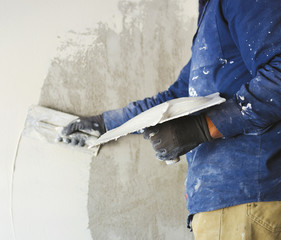Planning a party can be very stressful. From deciding on venues to selecting food items, it is important to think of every little detail. This can include even seemingly small tasks like choosing tables, chairs, and serve ware.

Before you start your business, make sure that you get the appropriate licenses and permits. This will help you avoid any problems later on. Contact Party Rentals Thousand Oaks for professional help.
Whether you are hosting a wedding, birthday party, or corporate event, it’s important to have the right supplies. A party rental company is a great place to get all of the essentials for your event. They will help you create a cohesive look that matches your vision for the event. Plus, they will save you time by being a one-stop shop for all your needs.
The type of supplies you need for a particular event will depend on the type and size of the gathering, as well as the location where it is taking place. For example, if you are planning a birthday party for your daughter, you will likely need a bounce house, food carts, tables and chairs, and some entertainment items. But if you are hosting a corporate event, you may need additional supplies like a dance floor and tents.
Another thing to consider is the kind of ambiance you want for your event. A party rental company will generally offer a wide variety of styles to choose from, ranging from traditional china patterns to modern bamboo pieces. They also tend to stock many different types of seating, from wooden benches for rustic occasions to Chiavari chairs for more formal events. This means that you can find the perfect seating to match your theme without having to search everywhere.
Depending on the type of event you are holding, you may need other supplies that are not typically offered by party rental companies. For instance, if you are hosting an outdoor event, you might need portable toilets or a generator. You might also need some more durable items like a tent or table linens in Annapolis.
A party rental business should have a variety of items in stock so that customers can choose the ones that are best for their particular event. They should also offer bundled packages that allow customers to get the supplies they need in one convenient location. Bundled packages will also help maximize revenue for the rental business. For example, if a customer rents a bounce house and inflatable water slides from the same location, they can receive discounts on both items.
They Save You Time
A rental business can be a great way to make money and stay active in your community. It allows you to network with other event planners and businesses, which can lead to strategic partnerships that help grow your business. Additionally, it gives you the opportunity to work part-time while minimizing the risk of financial strain. However, it is important to understand the nuances of the industry to maximize your profitability.
One of the most critical aspects of running a successful party rental business is establishing an effective communication channel with customers. It is important to listen to their concerns and address them immediately. Additionally, it is essential to keep a record of all conversations with your customers to avoid any confusion or miscommunications. This will also help ensure that your customers are getting the best service possible.
Using a rental management tool like Rentman can also save you time by automating many of the processes in your business. This can help you organize your inventory, customers, and invoices in one place. Additionally, it will allow you to track the progress of your marketing efforts and show your team the value that their work is creating for your business.
The party rental industry offers significant profitability potential with careful planning and diversified inventory. It is an excellent choice for aspiring entrepreneurs who want to work from home and gradually transition into full-time operations as their business grows. However, starting this business requires an initial investment of around $5,000 for equipment and other necessary expenses such as insurance.
Planning a big event can be stressful, especially when it comes to the smaller details. For example, sourcing the right dinnerware and flatware can be a huge task that can take days or even weeks. Fortunately, party rentals companies can save you the hassle of shopping by offering a wide selection of products in one location.
If you are considering starting a party rental business, it is crucial to plan your finances and research the market thoroughly. Be sure to get a business license and open a bank account for your new business. Also, get insurance for your inventory to protect yourself against any damage or theft.
They Are Affordable
When you rent items from a party rental company, you save on the cost of buying new equipment. This is especially beneficial when you’re planning a large event with many supplies. Additionally, renting can help you avoid the extra storage and transportation costs of buying your own equipment.
Many party rentals have a wide variety of items, typically sorted into categories that make it easier to find the right match for your theme or ambiance. In addition, they’re usually available at a price that fits your budget.
Another perk of working with a party rental company is that they can help you plan your event to ensure that it is successful. They can offer recommendations based on their experience working with a range of different clients and events, as well as provide suggestions on the best way to use specific equipment.
Moreover, they can also help you determine how much space you need for your guests. This will ensure that your guests are comfortable and have enough room to move around. They can even suggest decorations and tableware to complement the theme of your event.
Most party rentals will provide you with the option to pick up and return your rental items at a convenient time, so you can avoid wasting money on items that you’ll never use again. You can also avoid the hassle of storing and transporting your own equipment, which will free up your time and energy for other tasks.
Party rentals also take the stress out of organizing your event by handling all the details for you. They can deliver, set up, and take away the items you’ve rented to ensure that your event runs smoothly. This will allow you to focus on other aspects of the event, such as coordinating with vendors or managing guest lists.
Getting started with a rental business isn’t difficult, but it’s important to research the market before you start your own business. This will give you insight into how competitors operate and what services they offer. It will also help you identify potential customers. You can then structure your business ideas and prepare a business plan.
They Help You Create the Perfect Ambiance
Party rentals help to create the perfect atmosphere for a memorable event. They also reduce the hassle of having to search for specific items on your own. Most rental companies stock a variety of styles, so you can find something that fits your vision. They can also provide additional services, such as a photo booth or catering equipment. These services are very important if you want to make your event stand out from the crowd.
To be a successful rental business, you must have the right mindset and a passion for serving your customers. You must also be flexible and willing to work hard to build your business. You must also invest in marketing to create brand awareness and build credibility with your customers. Liability insurance is also a must, as it can protect you from liability claims and lawsuits.
Choosing the right party rentals is crucial for any event. Whether you’re hosting a wedding, birthday party, or corporate gathering, renting the right pieces can make all the difference. By opting for rental services, you can save time and avoid stress while still getting the highest-quality equipment. Moreover, you can also focus on other important details like coordinating with vendors and ensuring that the theme is followed throughout the event.
Before hiring a party rental service, consider their reputation and the number of years they have been in business. It’s also important to research the average pricing in your area. This will give you an idea of the price ranges for different types of rentals. Once you have a clear understanding of the cost, you can make informed decisions on what type of rental services to purchase.
Whether you’re planning an intimate dinner or large-scale corporate event, party rental providers can help you create an unforgettable experience for your guests. In addition to providing tables, chairs, and linens, they can also provide decor items, cooking equipment, stages and platforms, and wait staff. They also offer concession items like cotton candy and sno-kone machines for kids’ parties. Lastly, they can deliver and set up the equipment for you, which eliminates the need to transport and store it after the event.

